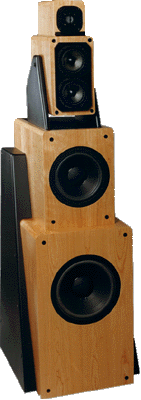
It will help the driver overcome the lack of volume present to still belt out that bass! Remember that the motion of the coil is critical for woofer cooling, so make sure the driver can move enough in the volume it is being played in, or the coil temps could go up significantly. If the box is too small (by a reasonable amount) add power.As the size of the enclosure increases, the mechanical limits of the woofer will be easier to reach.

Remember, there is such a thing as too big. By making the enclosure a bit bigger it will become more efficient in many cases, increasing output. Long story short, here is a quick list of ways that we can all “cheat” the rules to maximize our output, in almost every situation. It’s impossible to use, right? Wrong! Luckily, this is another place where the rules can be bent! As it turns out, with the application of a bit more power, the little bit of missing volume becomes no problem at all! Enclosure design can typically overcome any obstacle presented to the performance of an audio setup, if you know how you can manipulate the rules. 25 cubic less feet than the manufacturer recommends. Say you have that bad to the bone subwoofer you can’t wait to install, but your measurements show that you have. There is still hope for the space constrained as well. I try not to go more than 25% bigger than recommended in any scenario, as that is already likely near the point of diminishing returns. The cabin can eventually get so large that the woofer will lose all stability causing serious damage, so do this at your own risk and always ask for help where needed. For starters, this will not work beyond the point of diminishing returns. Now of course, there are exceptions and risks to consider. Simply increasing the volume has magically made this setup louder! While extra space may not be available in every install, the ones lucky enough to have extra room can definitely take advantage of this trick to get more for nothing. By building an enclosure roughly 20% larger than recommended, and increasing the port size accordingly, the enclosure for the woofer will become more efficient, translating to more output/watt of input signal. There is! I have always tried to look at manufacturer’s specs as a guideline, and less of a rigid set of rules. Is there a way to increase output without changing amps and without having to opt for a bigger speaker? If this setup were to be run in the “manufacturers recommended” enclosure, it would perform as intended by the manufacturer. Take, for instance, a 500 watt subwoofer paired with a 500 watt RMS amplifier.

For some, there is reprieve because spatial limitations don’t have to hold them back. Most of the aftermarket audio crowd wants to do the most they can with what they can reasonably afford or justify as far as sound systems go.


 0 kommentar(er)
0 kommentar(er)
